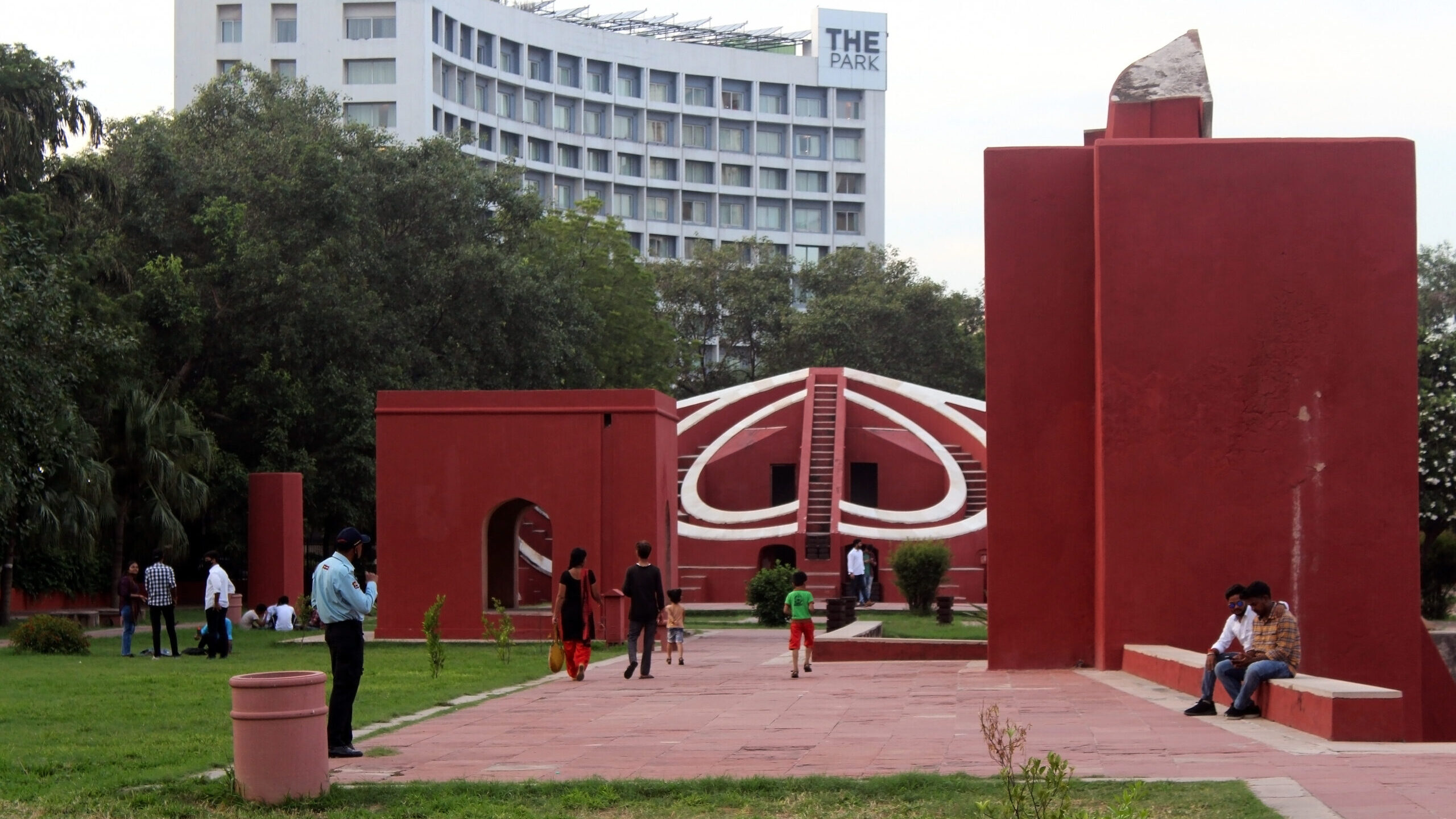
All photos: Faisal Malik
First-time visitors to Connaught Place might find the market built by the British to be vast, majestic, its dimensions too large to comprehend in one go.
But just a stone’s throw away, down Sansad Marg, there is another complex housing huge geometric structures in red sandstone – shapes that have clarity, focus, and helped in the advancement of science. Awesome, like the ruins of Athens.
Inside the fenced complex, a great place for selfies, not many question how these massive structures had been built, by whom, and why. Well, everyone knows Jantar Mantar is part of the tourist attractions of the capital but what about the story these massive structures have to tell?
Jantar Mantar is an astronomical observatory which was built by the ruler of Jaipur, Maharaja Jai Singh II, in 1724. The one in Delhi was not the only one. In fact, the maharaja built five astronomical observatories in northern India: the others are in Jaipur, Ujjain, Mathura and Varanasi.
The essential purpose of these large structures was to make astronomical observations. These are compiled in tables to help predict the movement of celestial bodies such as the sun, moon and planets. All of these instruments have been built with brick and rubble and have been plastered with lime.
The Jantar Mantar has 13 instruments that aid in these predictions, such as the Samrat Yantra, the Jayaprakash Yantra and the Mithra Yantra. It is a part of the tradition of Ptolemaic positional astronomy, which was common in a lot of civilisations.
For more stories that cover the ongoings of Delhi NCR, follow us on:
Instagram: instagram.com/thepatriot_in/
Twitter: twitter.com/Patriot_Delhi
Facebook: facebook.com/Thepatriotnewsindia
Rival leagues trigger players’ suspensions and a legal battle in Indian golf, for now
Former Delhi CM Kejriwal criticises Centre, Delhi govt over worsening air pollution, alleges AQI manipulation
Delhi Police raids Nangloi unit producing fake engine oil, seizes over Rs 1 crore worth…
Mukesh Sharma reimagines digital components as living matter in his solo exhibition ‘Decoding Digital DNA’
Nine accused were arrested in coordinated raids as police uncovered organised networks supplying mule bank…
Nearly 1.57 lakh PUC challans issued in two months as Delhi steps up GRAP enforcement…